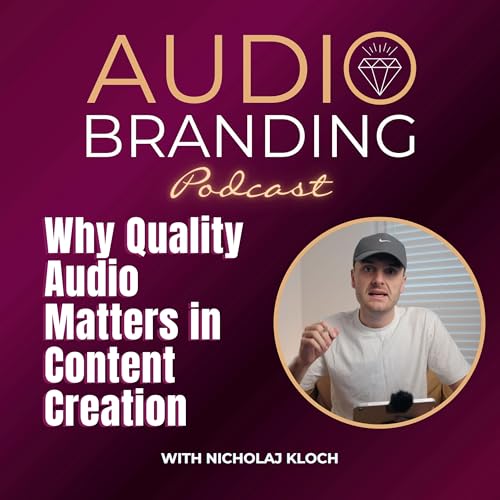“If you imagine a company has a ten million dollar marketing budget, right? And then you imagine they have a sonic logo on every single TikTok ad, Facebook ad, YouTube ad, all these new media where the majority of the traffic’s coming from now. If they can increase conversion rates marginally, they can have a huge difference to their bottom line. And it’s one of those things where, because sonic branding, once it’s done, once, and, well, yes, there might be a brand refresh where it’s changed in ten years, um, or it’s updated, or maybe it’s changed slightly to work with a different culture, right? There might be like a version which sounds slightly more Canadian, right? Or more Christmasy, or things like that. But the point being is this is an asset that they develop once, and then it can be used on these campaigns that can have huge advertising budgets, which makes it very cheap when you compare it to the actual campaign marketing spend.” – Dr. Thomas Dickson
My guest on this episode is a musicologist who specializes in how we perceive sound and how it shapes brand communication. With a PhD in Music Psychology, he helps brands create emotionally resonant and research-backed sonic identities. His work reduces subjectivity, improves creative decisions, and even addresses legal risks like plagiarism in audio branding.
His name is Dr. Thomas Dickson, and he’s advised national retailers, tech firms, and service brands throughout his career. And, as if the subject of musicology isn’t fascinating enough, we’ll also be discussing how businesses can make sure their sound stays original and protected.
As always, if you have questions for my guest, you’re welcome to reach out through the links in the show notes. If you have questions for me, visit audiobrandingpodcast.com, where you’ll find a lot of ways to get in touch. Plus, subscribing to the newsletter will let you know when the new podcasts are available, along with other interesting bits of audio-related news. And if you’re getting some value from listening, the best ways to show your support are to share this podcast with a friend and leave an honest review. Both those things really help, and I’d love to feature your review on future podcasts. You can leave one either in written or in voice format from the podcast’s main page. I would so appreciate that.
(0:00:00) - The Power of Sound in Advertising
Our discussion begins with a look back at Dr. Dickson’s early memories of sound, and he came prepared with a more recent, but still memorable, experience that demonstrated the power of sound. “By the grand finale,” he recalls as he describes an outdoor concert featuring the Melbourne Symphonic Orchestra, “it’s a bucketing down, raining and everyone’s still there. So we’ve got this huge event, it’s bucketing down, raining, [and] no one’s leaving because they want to hear the finale.” He tells us more about musicology, what it means, and how it can help build a stronger brand. “Musicology is like the academic and rigorous study of music,” he explains. “It comes down to a broad range of different styles, so this could be like music history, it could be music psychology, which is what I looked at, the psychology of music or sound, [or] it could be ethnomusicology.”
(0:09:05) - Musicology and Plagiarism in Sonic Branding
Dr. Dickson tells us about the different dimensions of musicology and how sound influences us, such as musical expectancy and episodic memory, and how much our impression of sound comes from the media we consume. “We have cultural norms associated with electronic music,” he explains, “digital sounds, hard hitting bass, all that kind of stuff that we
 26 分
26 分 19 分
19 分 31 分
31 分 31 分
31 分 34 分
34 分 30 分
30 分 2025/09/2429 分
2025/09/2429 分 2025/09/1729 分
2025/09/1729 分
